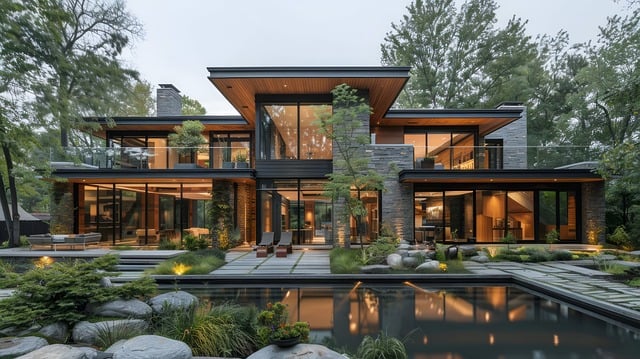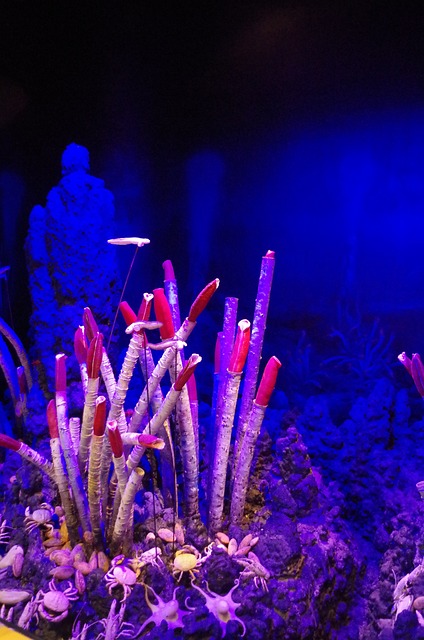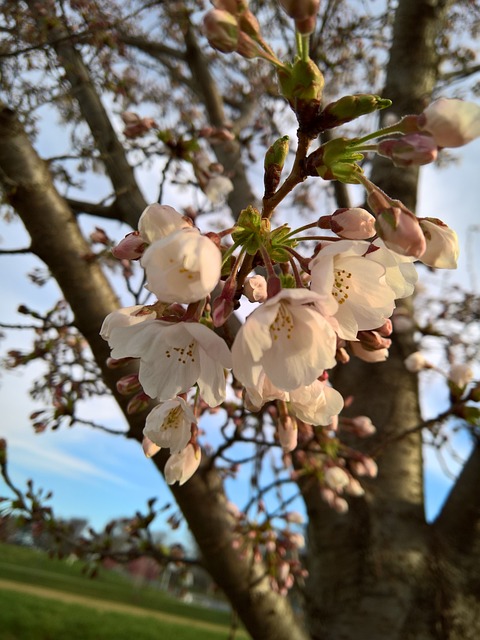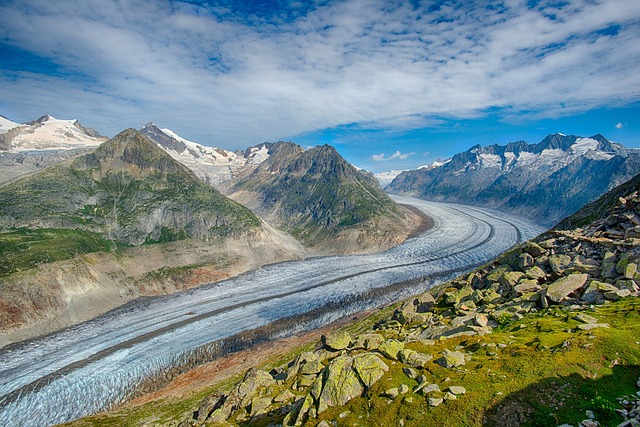When designing an environmentally conscious outdoor space, choosing the right landscape material options is key. The best materials for landscaping include responsibly sourced natural stone, which offers a lasting and visually appealing addition to your garden while minimizing ecological disruption. Eco-friendly landscaping materials like gravel and mulch each offer distinct benefits: gravel provides a low-maintenance, permeable surface that aids in water conservation and soil stability, while mulch enriches the soil and retains moisture, contributing to a thriving ecosystem. These materials are not only aesthetically pleasing but also align with modern sustainable landscaping practices. Additionally, innovative eco-friendly options like recycled glass, plastic, and rubber can be used for creating durable hardscapes that enhance both the visual appeal of your outdoor space and environmental health. Natural stone remains a preferred choice for fire pits and patios due to its compatibility with diverse design aesthetics and its ability to uphold sustainable principles by supporting local economies and reducing emissions through local sourcing. Overall, the selection of outdoor hardscape materials and sustainable landscape supplies that prioritize eco-friendly practices is crucial for creating a resilient, beautiful, and planet-friendly outdoor environment.
When crafting a harmonious and eco-conscious outdoor retreat, the choice of materials becomes pivotal. This article delves into the art of selecting landscape material options that resonate with nature’s palette while providing warmth and comfort. We will explore how modern landscape supplies can elevate your space’s natural aesthetic, focusing on the best materials for landscaping that are both sustainable and durable. From the timeless appeal of natural stone to the contrasting textures of gravel versus mulch, each option offers unique advantages for your outdoor hardscape materials. Join us as we navigate through these eco-friendly alternatives, ensuring your landscape not only complements the environment but also thrives within it.
- Optimizing Your Outdoor Space with Eco-Friendly Landscape Material Options
- – Exploring the benefits of selecting sustainable materials for your landscape design.
- – Highlighting the importance of eco-conscious choices in hardscape and softscape elements.
- – Discussing various eco-friendly options such as recycled materials, permeable paving, and locally sourced natural stone.
Optimizing Your Outdoor Space with Eco-Friendly Landscape Material Options

When optimizing your outdoor space with eco-friendly landscape material options, it’s crucial to consider the best materials for landscaping that balance aesthetics with sustainability. Natural stone for landscaping is a timeless choice that offers both durability and an organic appeal, complementing any modern landscape supply selection. These stones can be sourced responsibly, reducing environmental impact while providing a long-lasting foundation for your hardscape. In contrast to traditional materials, eco-friendly landscaping materials are designed to blend seamlessly with the environment, offering a naturalistic look that enhances the beauty of your outdoor space without compromising the planet’s resources. Gravel vs mulch debates often center on their respective benefits; gravel offers a low-maintenance, permeable surface that can aid in water retention and prevent soil erosion, while mulch enriches the soil and helps retain moisture for your plants. Both are sustainable landscape materials that contribute to a healthy ecosystem within your outdoor oasis.
– Exploring the benefits of selecting sustainable materials for your landscape design.

When embarking on a landscaping project, the choice of material can significantly influence both the aesthetic appeal and the environmental impact of your outdoor space. Opting for sustainable landscape materials not only contributes to eco-friendly practices but also enhances the natural beauty of your property. Among the diverse landscape material options available, natural stone stands out as a versatile choice that exudes timeless charm and complements various design styles. Its durability ensures it remains an attractive hardscape feature for years to come. Moreover, selecting materials like gravel or mulch from the best materials for landscaping can offer functional benefits such as soil retention, erosion control, and effective drainage. These eco-conscious alternatives to more traditional options contribute to modern landscape supplies that are both beautiful and beneficial, aligning with the principles of sustainable landscaping.
In contrast to some conventional hardscape materials, sustainable landscape materials require less energy to produce and transport, thereby reducing their carbon footprint. Gravel vs mulch comparisons often highlight mulch’s ability to enrich soil as it breaks down, while gravel provides a low-maintenance solution for paths and borders. Both serve distinct purposes in creating a harmonious and eco-friendly environment. When integrating these materials into your design, consider their longevity, local availability, and the environmental impact of their production to ensure that your landscape not only looks stunning but also supports ecological balance and resilience. By thoughtfully selecting from the array of modern landscape supplies available, you can achieve a landscaping project that is both visually appealing and sustainable, contributing positively to the health of the planet.
– Highlighting the importance of eco-conscious choices in hardscape and softscape elements.

When crafting a landscape that exudes warmth and harmony with nature, selecting the most suitable material is paramount. Eco-conscious choices in hardscape and softscape elements not only enhance the natural aesthetic but also ensure sustainability. Among the myriad of landscape material options available, natural stone stands out as an enduring and eco-friendly choice for outdoor hardscape materials. Its inherent beauty and durability offer a timeless appeal that complements any setting while adhering to sustainable principles. For softscape elements, the best materials for landscaping often include gravel vs mulch, both of which serve as excellent ground covers. Gravel, with its diverse textures and sizes, can provide drainage and reduce weed growth, whereas mulch enriches the soil and retains moisture. Each option contributes to a landscape that is both visually appealing and environmentally responsible, making them modern landscape supplies that align with contemporary eco-friendly practices. In selecting these materials, one must consider their source and lifecycle to ensure they are contributing positively to the ecosystem rather than detracting from it. Eco-friendly landscaping materials not only promote biodiversity but also create a harmonious blend of form and function within any outdoor space.
– Discussing various eco-friendly options such as recycled materials, permeable paving, and locally sourced natural stone.

When embarking on a landscaping project that prioritizes both warmth and an authentic natural aesthetic, homeowners and designers often consider a variety of eco-friendly landscape material options. Among the best materials for landscaping that offer a modern yet sustainable touch are recycled materials. These not only reduce environmental impact but also provide a unique character to outdoor hardscapes. Recycled glass, plastic, and rubber can be creatively integrated into pathways, retaining walls, and water features, offering both aesthetic appeal and longevity without compromising eco-friendly principles.
Incorporating natural stone for landscaping is another choice that aligns with sustainable landscape material practices. Different types of stone, such as slate, limestone, or granite, can be used to create everything from cozy fire pits to robust patios. These materials are often locally sourced, which minimizes transportation emissions and supports local economies. When comparing gravel vs mulch for garden paths or as ground covers, both have their merits; however, gravel’s durability and low maintenance make it a favorite for high-traffic areas, while mulch’s ability to retain moisture and suppress weeds makes it ideal for plant beds. Eco-conscious landscape design also includes permeable paving options that allow water to seep through, promoting groundwater recharge and reducing runoff pollution. Modern landscape supplies that emphasize these sustainable materials not only enhance the beauty of outdoor spaces but also contribute to a healthier environment.
In wrapping up our exploration of optimizing your outdoor space, it’s clear that the choice of landscape material options plays a pivotal role in achieving both warmth and a natural aesthetic while remaining eco-friendly. From the diverse array of sustainable materials available to the thoughtful integration of modern landscape supplies like natural stone, homeowners are now equipped to make informed decisions that balance functionality with environmental stewardship. Whether you’re considering the best materials for landscaping or weighing gravel vs mulch, prioritizing eco-friendly landscaping materials is not just a trend but an investment in the future of our planet. By opting for locally sourced and recycled options, your outdoor hardscape materials contribute to a greener environment while also enhancing the beauty and comfort of your outdoor living spaces. Embrace the opportunity to make your landscape design both inviting and sustainable, fostering a connection with nature that is as enduring as it is enriching.
